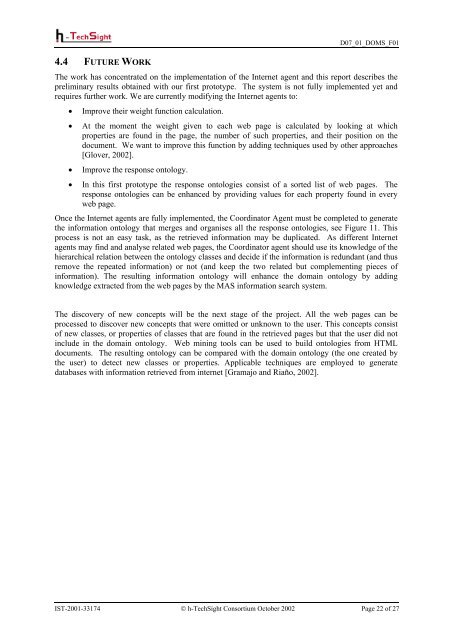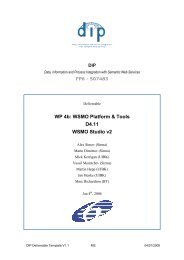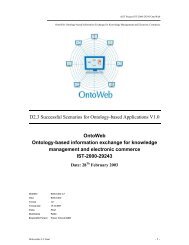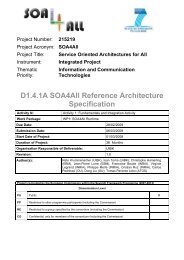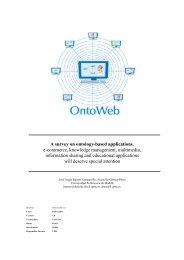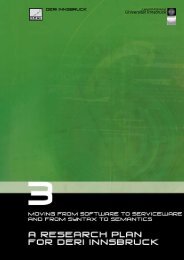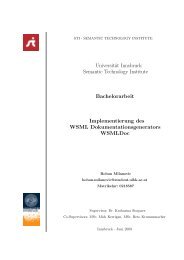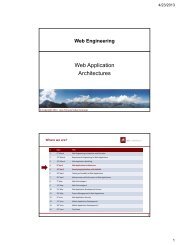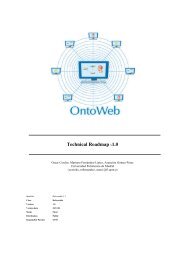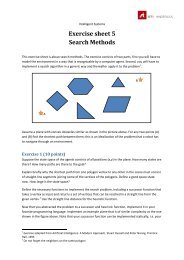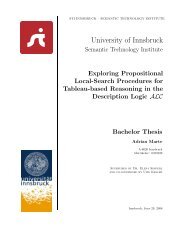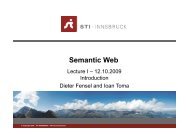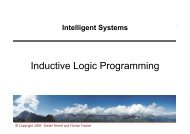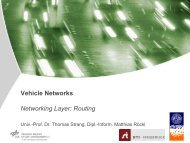D7 â Dynamic Ontology Management System (Design) - STI Innsbruck
D7 â Dynamic Ontology Management System (Design) - STI Innsbruck
D7 â Dynamic Ontology Management System (Design) - STI Innsbruck
Create successful ePaper yourself
Turn your PDF publications into a flip-book with our unique Google optimized e-Paper software.
4.4 FUTURE WORK<br />
D07_01_DOMS_F01<br />
The work has concentrated on the implementation of the Internet agent and this report describes the<br />
preliminary results obtained with our first prototype. The system is not fully implemented yet and<br />
requires further work. We are currently modifying the Internet agents to:<br />
• Improve their weight function calculation.<br />
• At the moment the weight given to each web page is calculated by looking at which<br />
properties are found in the page, the number of such properties, and their position on the<br />
document. We want to improve this function by adding techniques used by other approaches<br />
[Glover, 2002].<br />
• Improve the response ontology.<br />
• In this first prototype the response ontologies consist of a sorted list of web pages. The<br />
response ontologies can be enhanced by providing values for each property found in every<br />
web page.<br />
Once the Internet agents are fully implemented, the Coordinator Agent must be completed to generate<br />
the information ontology that merges and organises all the response ontologies, see Figure 11. This<br />
process is not an easy task, as the retrieved information may be duplicated. As different Internet<br />
agents may find and analyse related web pages, the Coordinator agent should use its knowledge of the<br />
hierarchical relation between the ontology classes and decide if the information is redundant (and thus<br />
remove the repeated information) or not (and keep the two related but complementing pieces of<br />
information). The resulting information ontology will enhance the domain ontology by adding<br />
knowledge extracted from the web pages by the MAS information search system.<br />
The discovery of new concepts will be the next stage of the project. All the web pages can be<br />
processed to discover new concepts that were omitted or unknown to the user. This concepts consist<br />
of new classes, or properties of classes that are found in the retrieved pages but that the user did not<br />
include in the domain ontology. Web mining tools can be used to build ontologies from HTML<br />
documents. The resulting ontology can be compared with the domain ontology (the one created by<br />
the user) to detect new classes or properties. Applicable techniques are employed to generate<br />
databases with information retrieved from internet [Gramajo and Riaño, 2002].<br />
IST-2001-33174 © h-TechSight Consortium October 2002 Page 22 of 27


